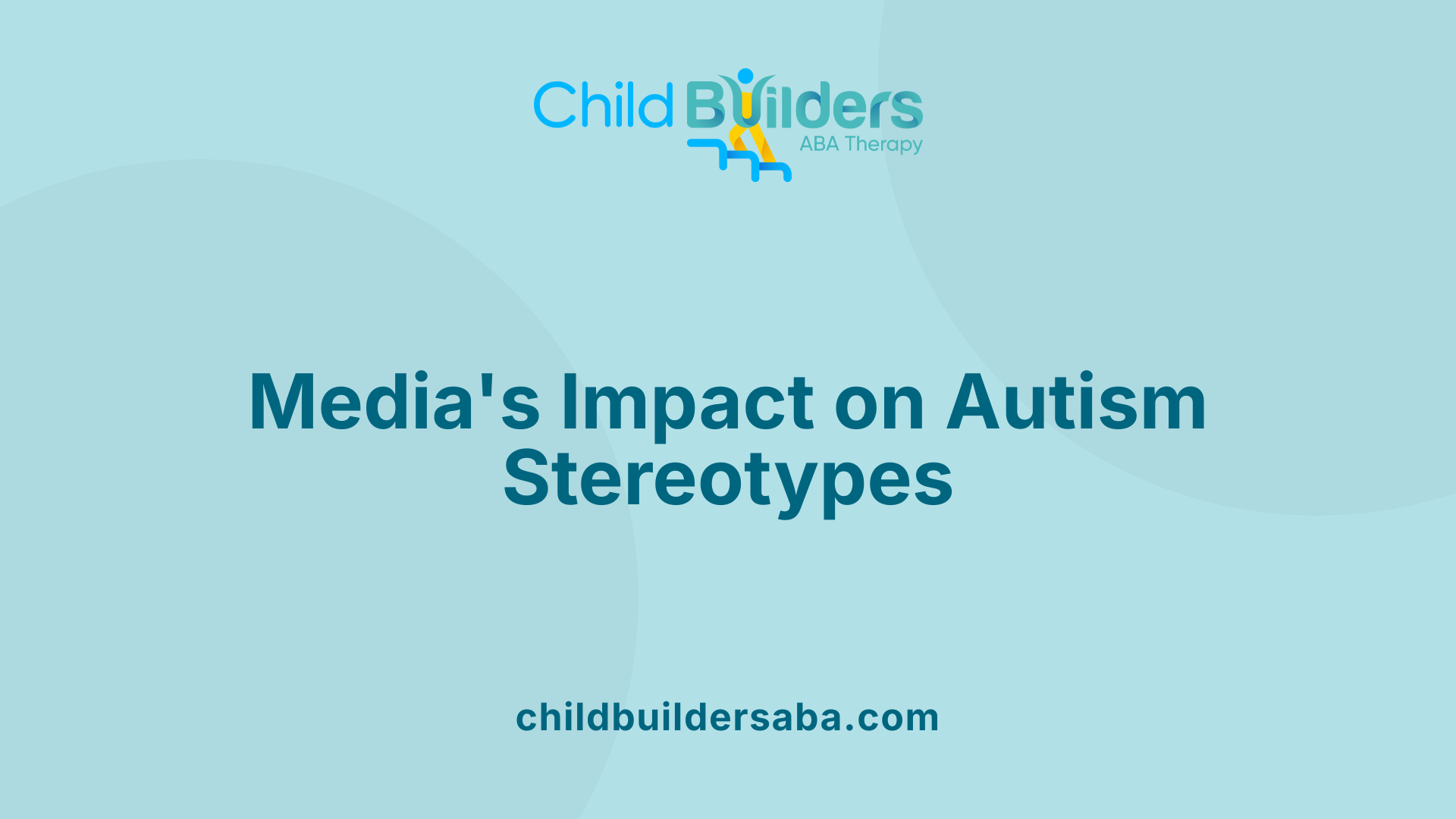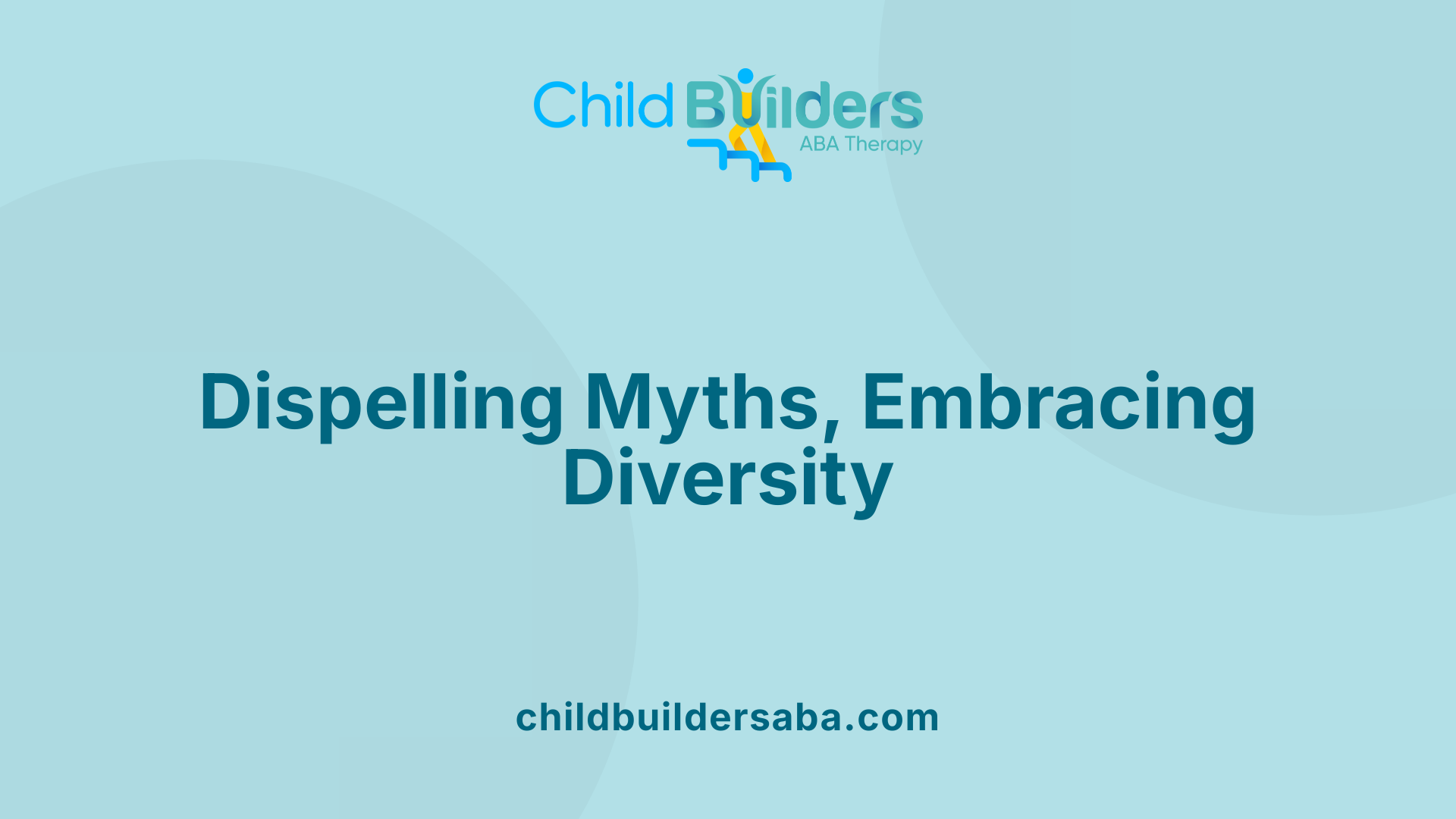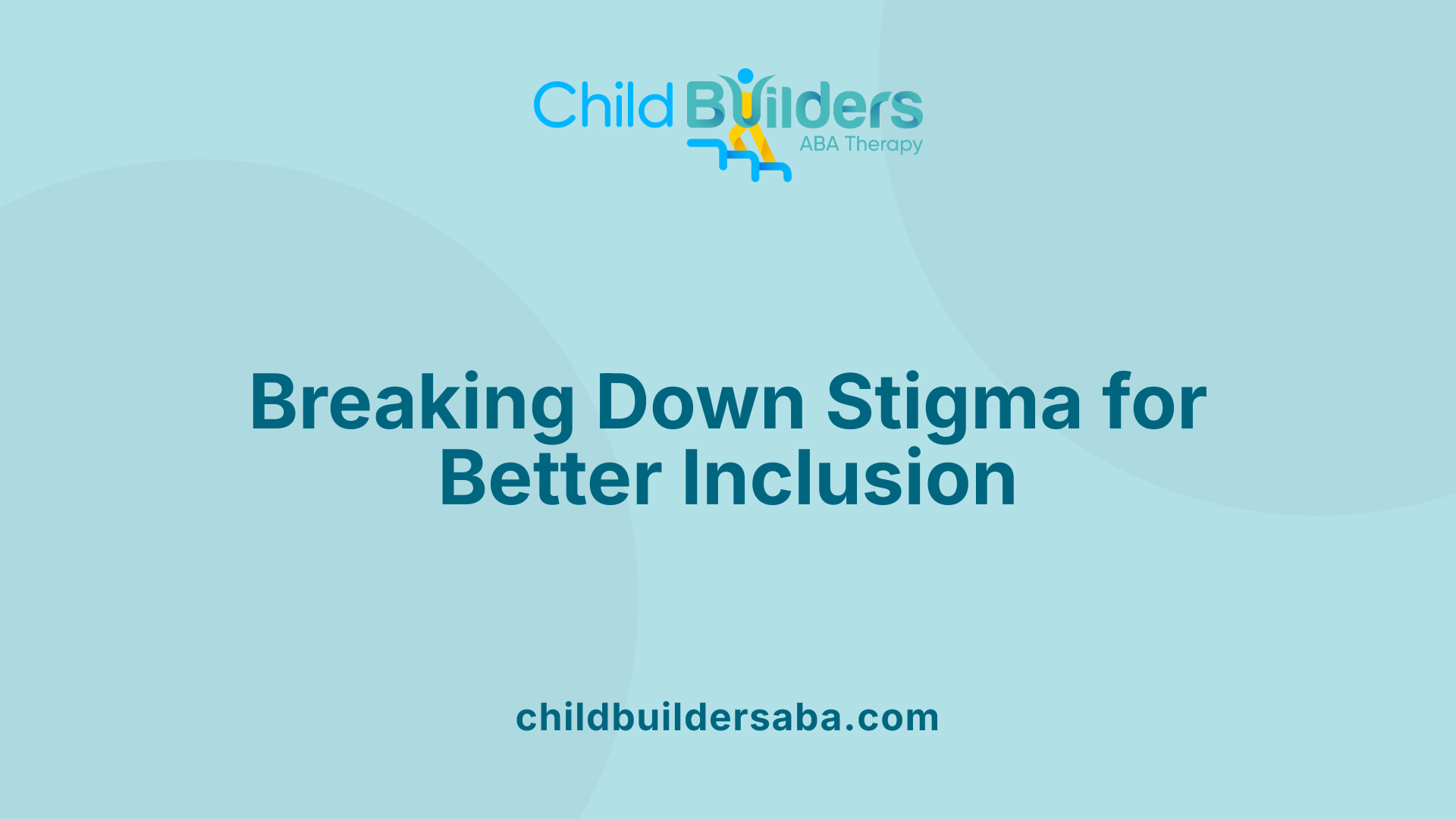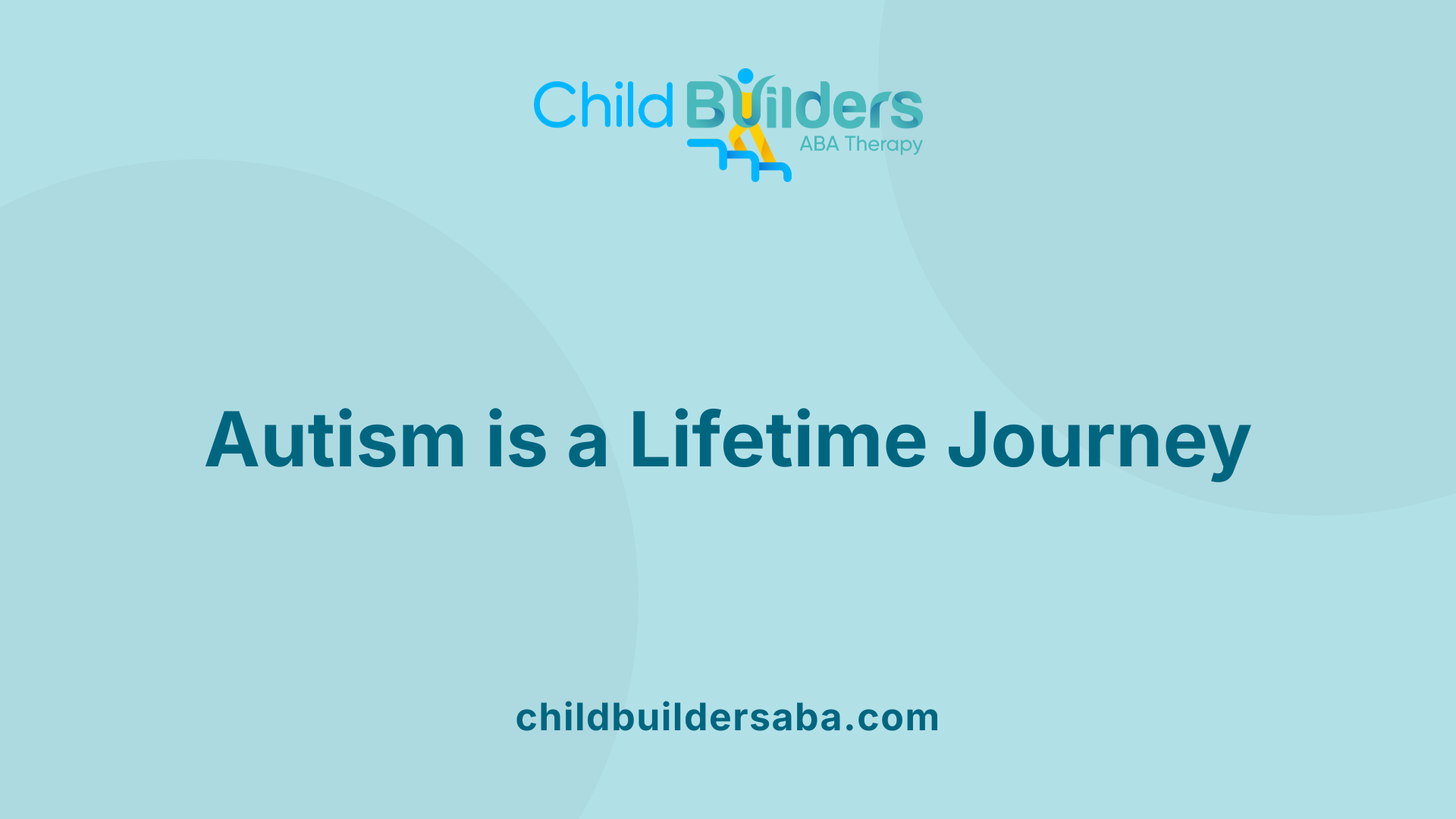Autism Stereotypes

Exploring the Complexity and Diversity of Autism
Autism Spectrum Disorder (ASD) is often misunderstood, surrounded by stereotypes that influence societal perceptions and impact the lives of autistic individuals. While media portrayals and cultural narratives have shaped public views, these stereotypes frequently oversimplify or misrepresent the realities of autism. This article aims to explore common stereotypes, their effects, and ways to promote a more accurate, accepting understanding of autism, highlighting the diversity within the autistic community.
Common Stereotypes and Their Societal Impact
What are common stereotypes about autism and their effects?
Many widespread beliefs about autism are rooted in misconceptions and media portrayals that paint a skewed picture of autistic individuals. One prevalent stereotype suggests that all autistic people possess extraordinary talents, such as savant skills in math or music. While some autistic individuals do have exceptional abilities, most do not, and this misconception can lead to unrealistic expectations or disappointment.
Another common myth is that autism inherently makes a person dangerous or uncontrollable. This incorrect idea fosters fear and avoidance, often resulting in social exclusion or discrimination. Similarly, the stereotype that autistic individuals are emotionless or lack empathy ignores the reality that they experience a full range of feelings. These misunderstandings can hinder meaningful relationships and societal acceptance.
Stereotypes also include the false notion that autism is caused by bad parenting or is a condition that can or should be cured. Such views blame families and ignore the complex genetic and environmental origins of autism. Media representations frequently exaggerate traits like extraordinary memory or social awkwardness, which do not encompass the diversity within the autism spectrum.
The effects of these stereotypes are significant. They contribute to stigma—negative judgments based on visible traits like unusual eye contact or repetitive behaviors—leading to social isolation and discrimination. This bias can limit access to education, healthcare, and employment opportunities, further marginalizing autistic individuals.
Recognizing that autism is highly diverse is critical. It includes people with varying abilities, needs, and experiences. Dispelling myths and promoting accurate understanding can foster greater acceptance and support for neurodivergent individuals, enabling them to live autonomous and fulfilling lives.
Stereotyped Behaviors and Their Real Meanings
What behaviors are often stereotyped as autism?
Autistic individuals frequently display behaviors that are misunderstood or misrepresented as peculiar symptoms. Common stereotyped behaviors include repetitive motor movements such as hand flapping, body rocking, toe walking, spinning objects, and finger flicking. These actions, known collectively as stimming, are often seen as bizarre but actually serve important purposes.
Vocal stereotypies like echolalia (repeating words or phrases), repetitive sounds, humming, and repeating familiar phrases are also typical. These behaviors can be mistaken for oddities but are crucial for self-regulation.
Functions of stimming behaviors (self-regulation, sensory processing)
Stimming behaviors help autistic individuals manage internal states. They act as outlets for sensory processing, providing comfort or clarity amid chaos. For example, body rocking or hand flapping can soothe overstimulation or reduce anxiety. Echolalia may serve as a way to practice language or cope with communication challenges.
While these behaviors are natural for many on the spectrum, they sometimes interfere with social interaction or learning. When necessary, behavioral interventions can help manage extreme or disruptive stimming actions without discouraging their calming benefits.
Understanding the true purpose behind stereotyped behaviors fosters greater acceptance and emphasizes the importance of supporting autistic individuals’ needs.
More information can be found by searching for "Autistic stereotyped behaviors explained" to explore detailed insights and current research findings.
The Role of Media in Shaping Autism Perceptions

How do media portrayals influence stereotypes of autism?
Media representations have a powerful impact on public perceptions of autism. Often, movies, documentaries, and fictional TV shows depict autistic characters in exaggerated ways, reinforcing common stereotypes. These include portraying autistic individuals as either exceptional savants with extraordinary talents or as socially detached and uncontrollable.
While some media portrayals attempt to show more diverse and realistic images, many tend to focus on extremes. For example, documentaries might highlight remarkable talents like exceptional memory or math skills, fueling the stereotype of the 'autistic genius.' Conversely, fictional characters may appear as isolated or emotionally distant, suggesting that all autistic individuals struggle with social interactions.
These portrayals influence how society understands autism, sometimes creating harmful misconceptions. Negative depictions can lead to stigma, discrimination, and misunderstandings, impacting how autistic people are treated in educational, social, and professional settings.
On the other hand, authentic and positive media examples promote acceptance and empathy. They help showcase the diversity within the autism spectrum, emphasizing that every individual has unique strengths and challenges. Moving beyond stereotypes, these representations can foster a more inclusive environment.
However, research indicates that media alone cannot fully improve public knowledge about autism. Still, its role in shaping perception is undeniable. Responsible, accurate portrayals help reduce stigma, highlight individuality, and encourage societal support for autistic people.
Understanding how media influences perceptions underscores the importance of diverse and truthful storytelling to challenge stereotypes and promote acceptance across communities.
Challenging Misconceptions and Promoting Inclusion

What are some misconceptions about autism and how can they be challenged?
Many misconceptions about autism are rooted in outdated beliefs or stereotypes. For example, a common false idea is that autism is caused by vaccines, such as the MMR vaccine. However, extensive scientific research involving large populations has found no link between vaccines and autism.
Another misconception is that autism results from poor parenting or is a sign of mental illness. In reality, autism spectrum disorder (ASD) is a lifelong neurodevelopmental condition that reflects differences in brain development and functioning. It is not influenced by how a child is raised or by mental health factors.
There is also a stereotype that autistic individuals are all highly talented or savants. While some autistic people have exceptional skills, the majority do not possess extraordinary abilities. Autism is highly diverse; each person has unique strengths, challenges, and life experiences.
Promoting accurate information involves education about the neurobiological basis of autism and emphasizing the spectrum's variety. Instead of focusing on misconceptions, society can foster acceptance and support through awareness campaigns, inclusive education, and public discussions.
Challenging stereotypes means dispelling myths and recognizing that autism does not define a person’s worth or potential. Supporting autistic individuals involves understanding their needs and celebrating their diverse abilities. This approach helps reduce stigma and encourages a more inclusive society where everyone can thrive.
Stigma and Its Effects on Autistic Lives

What are some stigmas faced by autistic individuals?
Autistic individuals often encounter societal stigma deeply rooted in misconceptions and negative stereotypes. These stereotypes can create barriers to acceptance and full inclusion.
One common form of stigma involves visible autistic traits. Behaviors such as repetitive movements, challenges with eye contact, and atypical facial expressions may be misinterpreted as odd or improper, leading to social rejection and discrimination.
The public's misunderstanding can cause autistic people to be unfairly judged as less capable or as lacking empathy. Such judgments foster exclusion from social, educational, and professional opportunities.
Many autistic individuals experience self-stigma, feeling ashamed or misunderstood about their true selves. To avoid negative reactions, some adopt masking behaviors — concealing their natural traits and emotions.
This effort to hide their authentic selves can be exhausting and sometimes detrimental, contributing to feelings of loneliness, anxiety, and depression.
Society's misconceptions, including the false notion that autism correlates with a lack of emotion or intelligence, further reinforce stereotypes. Consequently, autistic individuals may face not only external rejection but also internal struggles with self-esteem.
These stigmas can profoundly impact their mental health, making it harder to access necessary support and to develop genuine, supportive relationships.
By understanding and addressing these stigmas, communities can foster environments where autistic individuals are accepted, valued, and supported in expressing their true selves.
For more insights, search: "Stigma and autism."
Valuing Diversity and Promoting Neurodiversity
How can understanding diversity among autistic individuals help in reducing stereotypes?
Understanding the diversity among autistic individuals is essential in dispelling common stereotypes that often portray autism as a uniform condition. Autism manifests uniquely in each person, with a wide spectrum of abilities, interests, and ways of experiencing the world. Recognizing this variability shifts the focus from stereotypical images—such as all autistic people being savants or socially aloof—to appreciating individual strengths, challenges, and passions.
This perspective fosters acceptance, as society begins to see autistic individuals as diverse rather than monolithic. It highlights that many autistic people are capable of effective communication, meaningful relationships, and career success when provided with appropriate support. For example, some autistic individuals excel in areas like creative thinking, attention to detail, or pattern recognition.
Media plays a crucial role in presenting these diverse stories, which help to challenge misconceptions and expand public understanding. By sharing varied experiences—from high-functioning individuals to those with more pronounced needs—society can promote empathy and reduce stigma.
Ultimately, embracing neurodiversity respects each autistic person's unique journey. It opposes narrow stereotypes rooted in ignorance and recognizes that differences are part of human variation. With increased awareness and representation, both public perception and policy can shift toward inclusion, ensuring all autistic individuals are valued for their contributions and individuality.
The Lifelong Nature of Autism and Support Systems

Is autism a lifelong condition?
Autism spectrum disorder (ASD) is a lifelong condition that affects individuals across their entire lives. While it is often identified in early childhood, many autistic people continue to experience the condition into adulthood. In fact, there are now more autistic adults than children in the UK, highlighting the enduring nature of autism.
Autism manifests uniquely in each person and can change over time, with some individuals developing new skills and strategies that help them navigate their environment more effectively. Support systems and interventions play an essential role in improving quality of life at all stages.
How can outcomes change with support?
With appropriate support, many autistic individuals achieve positive life outcomes. Early intervention, educational accommodations, social skills training, and access to mental health services are crucial elements.
Support can enable autistic people to develop independence, build meaningful relationships, and pursue careers suited to their strengths. Skills such as attention to detail, creative thinking, and pattern recognition are often areas where autistic strengths shine, helping them succeed in various fields.
What are the diverse life paths of autistic individuals?
Autistic life trajectories vary widely, reflecting the spectrum’s diversity. Some may live independently or with assistance, work in specialized or mainstream environments, and form fulfilling relationships.
Others may require more extensive support to manage daily activities but still lead meaningful and productive lives. The understanding that autism does not define a person's worth or limit their potential is vital.
Rejecting stereotypes about autism
Many misconceptions persist about autism, such as the belief that autistic people are necessarily incapable of social interaction or that they lack emotional capacity. These stereotypes can hinder acceptance, access to opportunities, and proper support.
Challenging these false notions involves sharing accurate information about autism’s neurodiverse nature. Recognizing the vast range of abilities and experiences among autistic individuals fosters inclusivity and reduces stigma.
How do societal perceptions impact autistic adults?
Society’s understanding influences the quality of life for autistic adults. Negative stereotypes can lead to marginalization and discrimination, affecting employment, healthcare, and social connections.
Promoting awareness through education, positive media representations, and advocating for neurodiversity can alleviate stigmas. Emphasizing acceptance encourages more inclusive communities where autistic individuals can thrive.
| Aspect | Description | Impact |
|---|---|---|
| Lifelong persistence | Autism continues into adulthood for most | Ongoing need for support and understanding |
| Support outcomes | With proper interventions, positive living is achievable | Enhanced independence and fulfillment |
| Diversity of experiences | Different life paths, strengths, and challenges | Emphasizes individual potential beyond stereotypes |
| Stereotypes challenge | Misconceptions hinder inclusion | Education and awareness foster acceptance |
| Society's role | Societal perception influences well-being | Advocacy and positive representation needed |
Moving Toward Acceptance and Inclusion
Challenging stereotypes about autism is crucial for fostering a society that respects and understands the diverse experiences of autistic individuals. By promoting accurate information, challenging harmful myths, and encouraging representation that reflects real diversity, we can break down barriers and create more inclusive environments. Recognizing autism as a spectrum of unique experiences and strengths leads us toward greater empathy, acceptance, and support for all individuals on this journey.
References
- Debunking 8 Common Stereotypes of Autism
- Stereotypes of autism - PMC - PubMed Central
- Myths and causes - Autism | Autistica
- Seeing the Spectrum: Understanding Autism Beyond the Myths ...
- Understanding Stigma in Autism: A Narrative Review and ...
- Overcoming Stereotypes - Lighthouse Autism Center
- How autistic people are perceived | Embrace Autism
- Breaking 7 Autism Stereotypes: Embracing Neurodiversity
- A new book shatters stereotypes about autism and technology



.jpg)

































































































